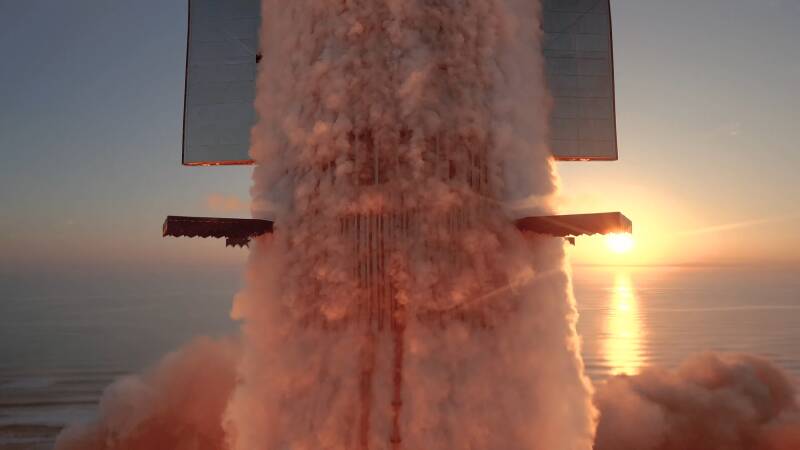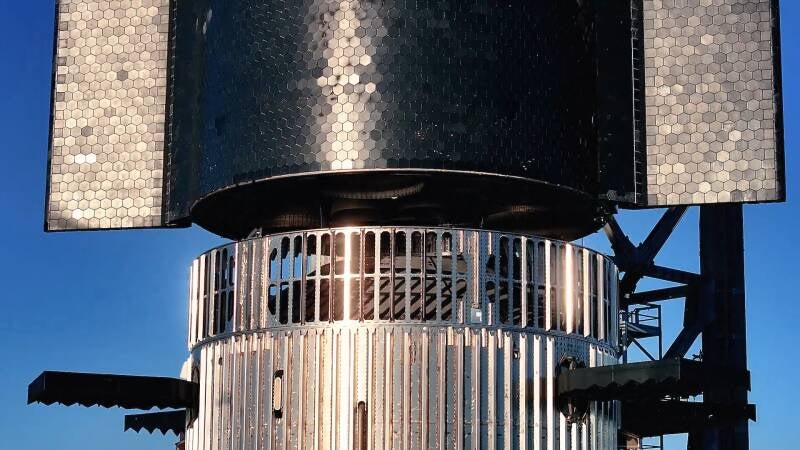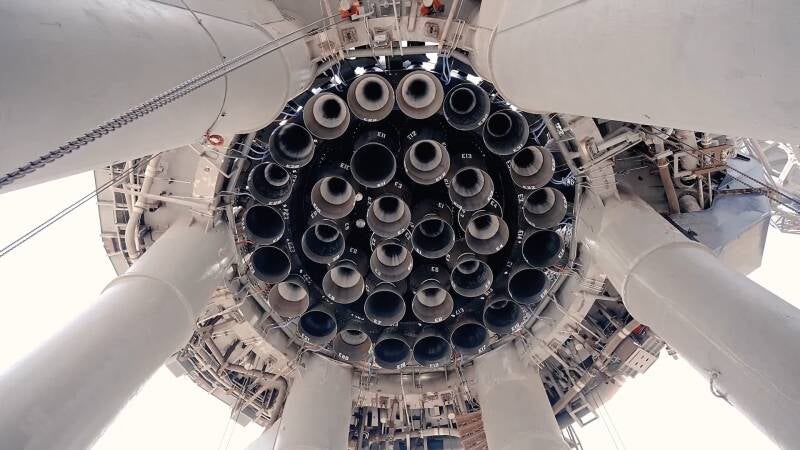
Image credit: SpaceX
Before the launch of SpaceX's Starship, here are some key points you need to know:
Launch Date: SpaceX is targeting March 14 (today) for the third test flight of its Starship vehicle.
Vehicle Structure: Starship consists of two parts: the reusable upper stage also known as Starship, and its Super Heavy first-stage booster.
Test Objectives: Previous test flights have not reached orbit. The upcoming test aims for Starship to reach orbital speeds and travel about 150 miles above Earth’s surface.
Reusability: Both Starship and Super Heavy are designed to be fully reusable, with the goal of being the world's most powerful rocket capable of launching up to 165 tons into orbit.
NASA's Artemis Program: NASA has selected Starship to land astronauts on the moon during its upcoming Artemis 3 mission scheduled for no earlier than 2026.
Previous Tests: The first two test flights faced challenges, with the first failing to separate from its booster and the second experiencing an explosion after separation.

Image credit: SpaceX
SpaceX has been utilizing the downtime between flights to upgrade its orbital launch complex, with a focus on infrastructure improvements rather than the vehicle itself. Here's a concise summary of the changes and their impact
Tank Farm Enhancements
Increased Capacity: Installation of four new sub-coolers and two pumps for liquid oxygen, and two sub-coolers and one pump for methane, to expedite fuel loading.
New Manifold: Aids in faster de-tanking in case of a scrub.
Upgraded Pressurization System: Uses water and heat exchangers to heat up propellants, which are then used as heated gas for pressurization.
Structural Reinforcements
Water Tanks: Repurposed methane tanks now serve as water tanks for pressurization and detonation suppression, with additional vertical and horizontal tanks installed.
Extra Vaporizers: Assist with the pressurization process.
Steel Reinforcements: Added to withstand the force of the 33 Raptors on the Super Heavy booster.
Future Developments
Launch Pad Expansion: Plans for a new launch tower and pad, with groundwork already underway.
Shielding: Added to protect the launch tower base and a blast wall to safeguard the liquid oxygen side of the tank farm.
Operational Impact
Efficient Launch Process: The wet dress rehearsal (WDR) indicates that these upgrades have streamlined the countdown and trajectory planning, making the launch process faster.
These strategic upgrades aim to bolster SpaceX's launch capabilities and ensure the resilience of the infrastructure against the intense conditions of rocket launches.

Image credit: SpaceX
Evacuation and Safety: A wide evacuation zone is established, and the road closes at midnight local time, 7 hours before the launch window, ensuring safety from the blast area of Starship Super Heavy.
Pre-Launch Preparations: The tank farm is pre-conditioned, and the area is cleared of foreign object debris (FOD) to prevent damage to the infrastructure or the Raptors upon ignition.
Operational Efficiency: SpaceX has reduced the tank farm activation time from 2 h 40 mins to 2 h16 mins, indicating a 25-minute operational improvement.
Countdown Enhancements: The countdown process has been expedited:
Propellant Loading: The flight director now verifies propellant loading at 1 hour and 15 minutes, compared to 2 hours in previous flights.
Booster LOX and Methane Load: Starts at 42 and 41 minutes respectively, significantly faster than before.
Ship Loading: Begins at 53 minutes, with the ship starting before the booster due to its lower propellant volume.
Final Countdown: At 3 minutes and 30 seconds before T-0, the booster propellant load concludes, and the ship follows 40 seconds later. The total fueling duration for Super Heavy is now 39 minutes and 30 seconds.
Launch Sequence: The flame deflector activates at 10 seconds, and Raptors ignite at 3 seconds before liftoff, consistent with the previous flight.
SpaceX's goal to streamline the timeline is evident in these improvements, showcasing their commitment to enhancing launch efficiency and reliability. The WDR provides valuable insights into the launch process, allowing SpaceX to refine operations further.
The mission objectives for SpaceX's Starship flight 3 are quite ambitious and mark a significant step in the development of the spacecraft.

Image credit: John Howard for SpaceX Frontpage
Opening and closing Starship's payload door: This will be the first time the payload door operations are tested in space.
Propellant transfer demonstration: During the upper stage's coast phase, there will be a demonstration of transferring propellant, which is crucial for longer missions and refuelling in space.
First-ever re-light of a Raptor engine in space : It's essential for manoeuvres in space and for de-orbit burn to return back to Earth.
Controlled re-entry of Starship : This involves safely bringing the Starship back to Earth's atmosphere and aiming for a splashdown in the Indian Ocean, testing new flight paths and re-entry techniques to maximize public safety. First stage will reportedly simulate being caught by the chopsticks by hovering above the water surface of Gulf of Mexico before shutting its
engines off and splashing.
Neither Ship nor booster will be recovered irrespective of the condition they will be in.
These objectives are designed to push the capabilities of the Starship and bring SpaceX closer to its goal of making the spacecraft fully and rapidly reusable for missions to the Moon, Mars, and beyond.


Add comment
Comments